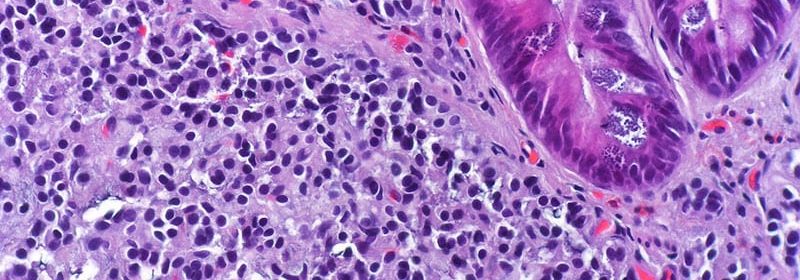Tissue-Sparing Resection, Ablation Option for NET Liver Mets

The study covered in this summary was published on researchsquare.com as a preprint and has not yet been peer reviewed.
Key Takeaway
Parenchymal-sparing liver resection with microwave ablation is safe and effective for patients who have neuroendocrine tumors (NETs) and a high number of liver metastases; the treatment has no effect on synthetic liver function.
Why This Matters
Liver metastases are common among patients with NETs.
Surgical debulking relieves symptoms and improves long-term survival.
Parenchymal-sparing liver resection with microwave ablation is one surgical option, but reports on patient outcomes are limited.
The researchers addressed the gap. From their results, they recommend that parenchymal-sparing liver resection with microwave ablation be considered for patients who have large numbers of liver lesions in settings with the required treatment expertise.
Study Design
The team reviewed 53 patients with NETs treated at the University of Chicago’s NET program from 2019 to 2021.
For the 53 patients, a total of 1069 liver lesions were debulked with a combination of parenchymal-sparing liver resection and microwave ablation.
Lesions involved no more than 25% of the liver, and patients had a median of 17 lesions.
All but two patients had 90% or better lesion debulking.
Median follow-up was 12.1 months.
Key Results
All patients who had preoperative symptoms reported relief after surgery.
Almost half did not require subsequent systemic therapy at their most recent follow-up and either had no evidence of disease (n = 17) or disease was stable without progression (n = 9).
Synthetic liver function was not affected by the number of lesions debulked ― 15 or fewer vs more than 15 ― as measured by international normalized ratio (P = .21) and total bilirubin (P = .67).
Severity of postoperative transaminitis and thrombocytopenia were proportional to the number of lesions debulked. Transaminitis typically resolved by postoperative day 5. Thrombocytopenia was generally transient; nadirs were reached by postoperative day 2.
Overall, 13% of patients had grade 3/4 complications, but there were no differences in type or incidence based on the number of lesions debulked.
Median time to liver recurrence was 10.9 months.
Limitations
It was a retrospective study with a small cohort and short follow-up.
It’s unclear whether the results are generalizable outside of a highly specialized, multidisciplinary NET program.
Disclosures
No funding for the study was reported, and the investigators did not disclose any relevant financial relationships.
This is a summary of a preprint research study, “Single Center Outcomes from Parenchymal-sparing Resections and Microwave Ablations for Neuroendocrine Tumor Liver Metastases,” led by Frances Lee of Southern Illinois University, provided to you by Medscape. The study has not been peer reviewed. The full text can be found at researchsquare.com.
M. Alexander Otto is a physician assistant with a master’s degree in medical science and a journalism degree from Newhouse. He is an award-winning medical journalist who has worked for several major news outlets before joining Medscape and also an MIT Knight Science Journalism fellow. Email: [email protected].
For more news, follow Medscape on Facebook, Twitter, Instagram, and YouTube.
Source: Read Full Article